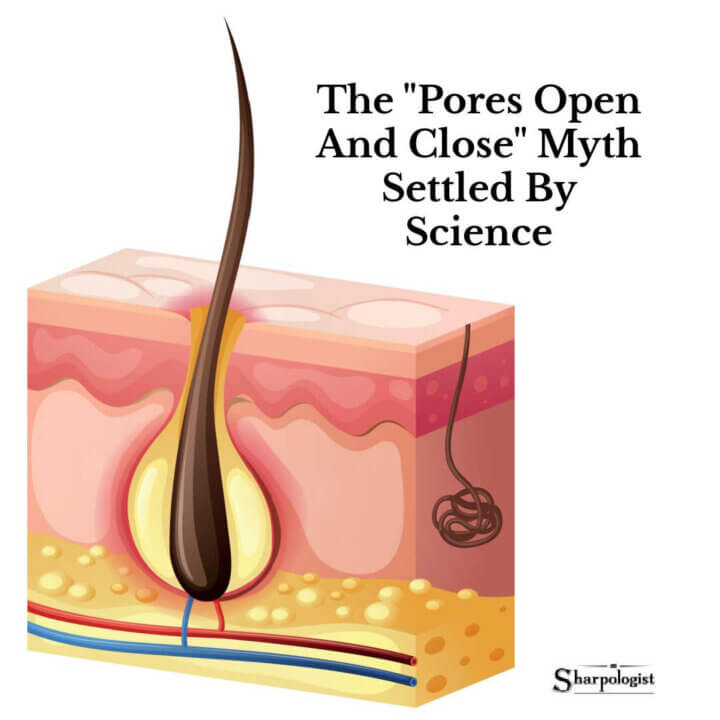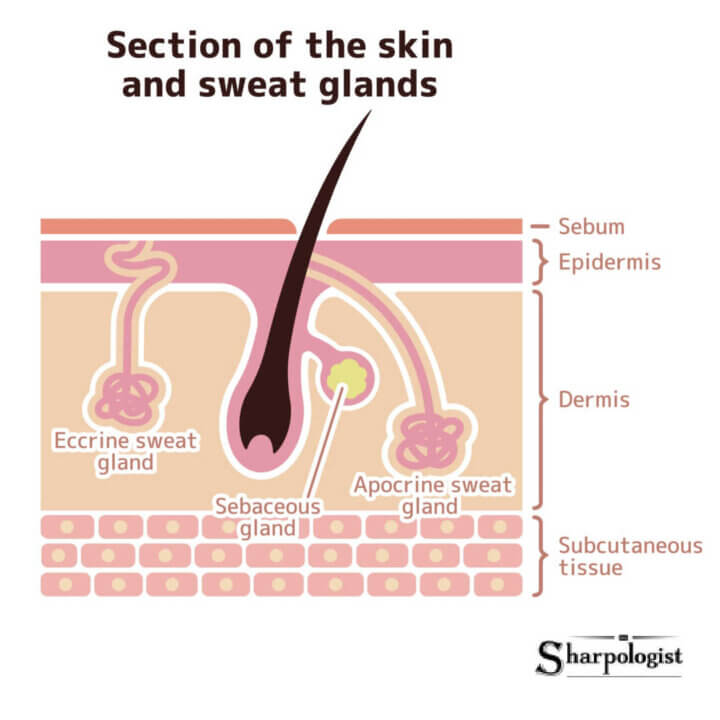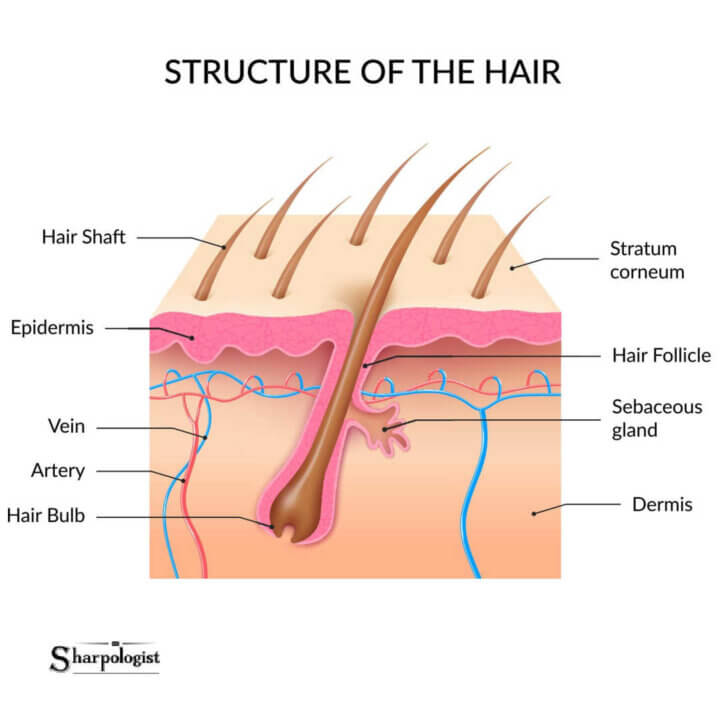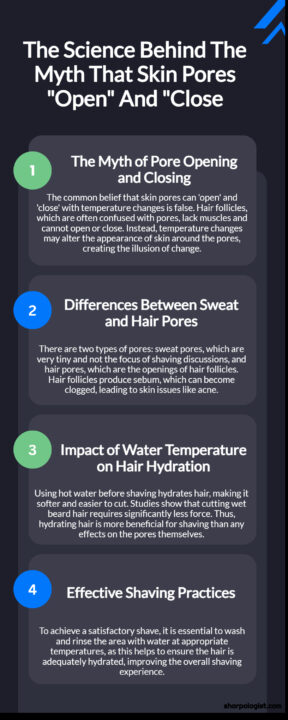
I have been looking at shaving myths. I previously examined the myth that hair grows back thicker/faster after shaving. This article looks at whether skin pores really “open” and “close” during a shave. Do pores open and close?
Background
You read it again and again through the years when people talk about preparing for a shave: ‘wash with warm water to open the pores then rinse with cool water to close the pores.’ I’m guilty of it myself.
But over the past few years more people have looked under the surface to dispute that. Do pores open and close? Here is the actual science of what is going on.
Skin Pores – What Is Really Happening
There are actually two types of pores on your body, one related to sweating and one related to hair. Sweat pores are very tiny (they can’t easily be seen “by eye”) and are not related to the discussion in this article. Hair pores, on the other hand, are what most people think of when they talk about pores on the skin.
Our body’s skin contains hair follicles, shafts from which hair can grow and protrude from the skin. Although ”follicles” and “pores” are often used interchangeably, a pore is simply the opening of a hair follicle that extends downward through several layers of skin. One explanation I saw if you think of the hair follicle as a house’s chimney, the pore is the opening at the top–but instead of letting smoke out, the follicle lets a shaft of hair out.
Small glands at the base of the follicle produce Sebum–a mixture of proteins, fats, salts, and cholesterol. Sebum normally travels up the follicle and exits through the pore. But dirt and oil can collect around the pores causing a clog that can cause a blockage that produces inflammation–acne, most commonly.

So Do Pores Open And Close?
Anyway…the key physiological takeaway from the previous section is that hair follicles don’t have muscles. There is no way a pore can “open” or “close” on its own.
However there are factors that come into play that may give the illusion of pores “opening” and “closing.”
According to Ellen Marmur, an associate clinical profession of dermatology at the Icahn School of Medicine at Mount Sinai, there are piloerector muscles, “tiny muscles in the skin attached to the hair follicles.” Piloerector muscles contract when cold (“goose bumps”). “Plus, all of the superficial muscles of the face are attached to the skin.”
Hot water can help soften a comedonal core, a “plug” in the pore caused by the oil and debris discussed in the previous section. The “plug” may enlarge a pore, making it appear larger.
The Real Benefit Of Water (Hot And Cold)
So what is the real benefit of water (hot or cold) as it relates to shaving? It’s not for the pores but for the hair itself.
In a 1937 paper for the American Medical Association by Lester Hollander (MD) and Elbridge Casselman (MD), “Factors Involved In Satisfactory Shaving” (available for a fee at DeepDyve.com) the effect of water was one of the factors examined. The most relevant section to this article:
“The tensile strength and consequently the hardness of hair are lessened by water absorption.
“Hair also takes up sebacceus secretion, which retards water absorption–an important factor in shaving, because in hair covered in sebacceus secretion there is a delay in water absorption during lathering.”
Donald Deem (MS) and Martin Eiger (PhD) published a paper for the Society Of Cosmetic Chemists (available at library.scconline.org) in 1976 studying the use and temperature of water for shaving:
“Synopsis: Device is described which permits measurement of the force required to CUT a BEARD HAIR FIBER under a variety of conditions. Studies with this device show that the force required to cut wet beard fibers with commercial razor blades is about 65 per cent less than that of dry fibers. Beard hair is almost completely hydrated by exposure to water for about 2 minutes at room temperature, and this hydration is accelerated by an increase in temperature.”

Related Post: Shaving 101: Tackling A Tough Beard
Conclusion
As shown here, the question of “do pores open and close?” during the shaving process can be scientifically disproved. The skin around pores can temporarily give the appearance of changing–for a short time–with temperature.
Hot water may make your skin feel softer immediately and cold water might make your skin feel a little firmer for a few minutes, but the effect will begin to disappear as soon as your skin temperature begins to return to normal.
Much more important is the aspect of using water to hydrate the hair, making it easier to shave. Warmer water can accelerate the hydration process.
So wash and rinse the area to be shaved with water before and after taking blade to skin.


Interesting. So post shave, is there really any point to doing a cold water splash after the hot water rinse? I know it feels good. But as is mentioned everywhere, my understanding was that the final cold water rinse was to close the pores back up.
Comments are closed.